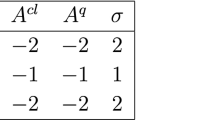Abstract
Topological phase transitions such as the Berezinskii-Kosterlitz-Thouless (BKT) transition are difficult to characterize due to the difficulty in defining an appropriate order parameter or to unravel its critical properties. In this paper, we discuss the application of a newly introduced numerical algorithm that was inspired by the Fisher zeros of the partition function and is based on the partial knowledge of the zeros of the energy probability distribution (EPD zeros). This iterative method has proven to be quite general, furnishing the transition temperature with great precision and a relatively low computational effort. Since it does not need the a priori knowledge of any order parameter it provides an unbiased estimative of the transition temperature being convenient to the study of this kind of phase transition. Therefore, we applied the EPD zeros approach to the 2D XY model, which is well known for showing a BKT transition, in order to demonstrate its effectivity in the study of the BKT transition. Our results are consistent with the real and imaginary parts of the pseudo-transition temperature, T(L), having a different asymptotic behavior, which suggests a way to characterize a BKT like transition.




Similar content being viewed by others
References
N.D. Mermin, H. Wagner, Absence of ferromagnetism or antiferromagnetism in one-or two-dimensional isotropic Heisenberg models. Phys. Rev. Lett. 17, 1133 (1966). https://doi.org/10.1103/PhysRevLett.17.1133
40 Years History of Berezinskii-Kosterlitz-Thouless Theory, edited by Jorge V. José (World Scientific) (2013)
P. Minnhagen, The two-dimensional Coulomb gas, vortex unbinding, and superfluid-superconducting films. Rev. Modern Phys. 59, 1001 (1987). https://doi.org/10.1103/RevModPhys.59.1001
V.L. Berezinskii, Destruction of long-range order in one-dimensional and two-dimensional Systems having a continuous symmetry group I. Classical Systems. Sov. Phys. JETP. 32, 493 (1971)
J.M. Kosterlitz, D.J. Thouless, Ordering, metastability and phase transitions in two-dimensional systems. J. Phys. C Solid State Phys. 6, 1181 (1973)
L. Pitaevskii, S. Stringari, Bose–Einstein condensation and superfluidity, international series of monographs on physics, Oxford University Press (2016)
R.J. Fletcher, Bose-Einstein condensation and superfluidity in two dimensions, Dissertation submitted for the degree of Doctor of Philosophy, Trinity College, University of Cambridge (2015)
K. Gretchen, Campbell, Superfluidity goes 2D. Nat. Phys. 8, 643 (2012). https://doi.org/10.1038/nphys2395
D.C. Mattis, Statistical mechanics made simple : a guide for students and researchers. World Scientific Publishing (2003)
J.C.S. Rocha, B.V. Costa, L.A.S. Mól, Using zeros of the canonical partition function map to detect signatures of a Berezinskii-Kosterlitz-Thouless transition. Comput. Phys. Commun. 209, 88–91 (2016). https://doi.org/10.1016/j.cpc.2016.08.016
T.P. Figueiredo, J.C.S. Rocha, B.V. Costa, Topological phase transition in the two-dimensional anisotropic Heisenberg model: a study using the replica exchange wang-landau sampling. Physica A-Statistical Mechanics and its Applications. 488, 121 (2017). https://doi.org/10.1016/j.physa.2017.07.010
R. Kenna, A.C. Irving, . The Kosterlitz-Thouless universality class. 485, 583 (1997). https://doi.org/10.1016/S0550-3213(96)00642-6
H.G. Evertz, D.P. Landau, Critical dynamics in the 2D classical XY-model: a spin dynamics study. Phys. Rev. B. 54, 12302 (1996). https://doi.org/10.1103/PhysRevB.54.12302
B.V. Costa, P.Z. Coura, S.A. Leonel, Berezinskii–kosterlitz–thouless transition close to the percolation threshold. Phys. Lett. A. 377, 1239 (2013). https://doi.org/10.1016/j.physleta.2013.03.030
M.E. Fisher, Renormalization group theory: Its basis and formulation in statistical physics. Rev. Mod. Phys. 70, 653–681 (1998). https://doi.org/10.1103/RevModPhys.70.653
C.N. Yang, T.D. Lee, Statistical theory of equations of state and phase transitions. i. theory of condensation. Phys. Rev. 87, 404–409 (1952). https://doi.org/10.1103/PhysRev.87.404
M.E. Fisher, in . Lectures in theoretical physics: Volume VII C - statistical physics, weak interactions, field theory : lectures delivered at the summer institute for theoretical physics, University of Colorado, Boulder, 1964, No. v. 7, University of Colorado Press, Boulder, ed. by W. Brittin, (1965)
B.V. Costa, L.A.S. Mól, J.C.S. Rocha, Energy probability distribution zeros: a route to study phase transitions. Comput. Phys. Commun. 216, 77 (2017). https://doi.org/10.1016/j.cpc.2017.03.003
B.V. Costa, L.A.S. Mól, J.C.S. Rocha, The zeros of the energy probability distribution - a new way to study phase transitions. J. Phys. Conf. Ser. 921, 012004 (2017). https://doi.org/10.1088/1742-6596/921/1/012004
T. Vogel, Y.W. Li, T. Wüst, D.P. Landau, Generic, hierarchical framework for massively parallel wang-landau sampling. Phys. Rev. Lett. 110, 210603 (2013). https://doi.org/10.1103/PhysRevLett.110.210603
T. Vogel, Y.W. Li, T. Wüst, D.P. Landau, Scalable replica-exchange framework for Wang-Landau sampling. Phys. Rev. E. 90, 023302 (2014). https://doi.org/10.1103/PhysRevE.90.023302
F. Wang, D.P. Landau, Efficient, Multiple-Range random walk algorithm to calculate the density of states. Phys. Rev. Lett. 86, 2050–2053 (2001). https://doi.org/10.1103/PhysRevLett.86.2050
A.M. Ferrenberg, R.H. Swendsen, New Monte Carlo technique for studying phase transitions. Phys. Rev. Lett. 61, 2635–2638 (1988). https://doi.org/10.1103/PhysRevLett.61.2635
A.M. Ferrenberg, R.H. Swendsen, Optimized Monte Carlo data analysis. Phys. Rev. Lett. 63, 1195–1198 (1989). https://doi.org/10.1103/PhysRevLett.63.1195
Funding
The authors thank CNPq (Grants 303480/2017-3, 306457/2016-4) and FAPEMIG (APQ-03183-16) for the partial financial support.
Author information
Authors and Affiliations
Corresponding author
Additional information
Publisher’s Note
Springer Nature remains neutral with regard to jurisdictional claims in published maps and institutional affiliations.
Rights and permissions
About this article
Cite this article
Costa, B.V., Mól, L.A.S. & Rocha, J.C.S. A New Algorithm to Study the Critical Behavior of Topological Phase Transitions. Braz J Phys 49, 271–276 (2019). https://doi.org/10.1007/s13538-019-00636-x
Received:
Published:
Issue Date:
DOI: https://doi.org/10.1007/s13538-019-00636-x




